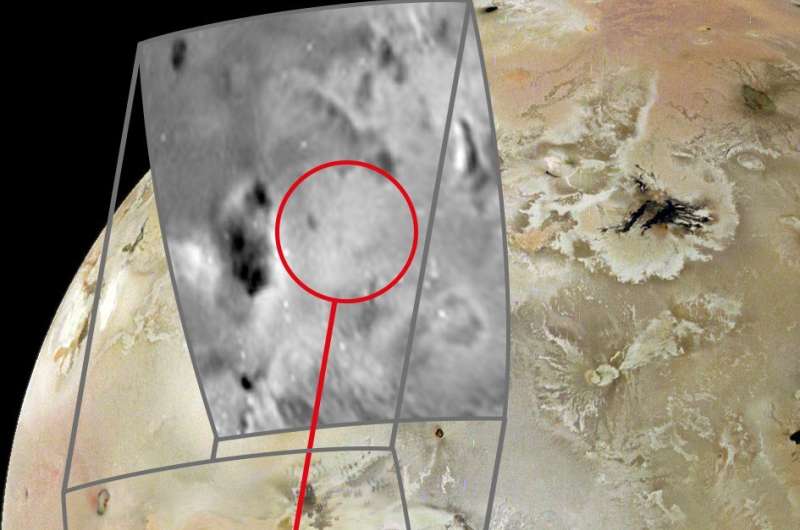This article has been reviewed according to Science X's editorial process and policies. Editors have highlighted the following attributes while ensuring the content's credibility:
fact-checked
proofread
JunoCam spots new volcano on active Io

A new volcano has been spotted on Jupiter's moon Io, the most geologically active place in the solar system. Analysis of the first close-up images of Io in over 25 years, captured by the JunoCam instrument on NASA's Juno mission, reveal the emergence of a fresh volcano with multiple lava flows and volcanic deposits covering an area about 180 kilometers by 180 kilometers. The findings were presented at the Europlanet Science Congress (EPSC 2024) in Berlin this week.
The new volcano is located just south of Io's equator. Although Io is covered with active volcanoes, images taken during NASA's Galileo mission in 1997 did not see a volcano in this particular region—just a featureless surface.
"Our recent JunoCam images show many changes on Io, including this large, complicated volcanic feature that appears to have formed from nothing since 1997," said Michael Ravine, Advanced Projects Manager at Malin Space Science Systems, Inc, which designed, developed and operates JunoCam for the NASA Juno Project.
The eastern side of the volcano is stained a diffuse red from sulfur that has been vented by the volcano into space and fallen back onto Io's surface. On the western side, two dark streams of lava have erupted, each running for about a hundred kilometers.
At the farthest point of the flows, where the lava has pooled, the heat has caused the frozen material on the surface to vaporize, generating two overlapping gray circular deposits.
The best JunoCam image of this feature, east of an existing volcano called Kanehekili, was taken on 3 February 2024 from a distance of 2,530 kilometers and at a scale of 1.7 kilometers per pixel. The images were captured on the nightside of Io with the illumination coming only from Jupiter.

This encounter was one of three recent flybys of Io in 2023 and 2024, during which JunoCam acquired about 20 close-up visible color images. JunoCam observed a total of nine plumes associated with active volcanic features on the moon, as well as other changes, such as new lava flows and other surface deposits.
The JunoCam data are posted on the mission's website soon after being received on Earth to enable the public to create images of Jupiter and its moons.
"JunoCam images are created by people from all walks of life, providing a way for anyone to join our science team and share in the excitement of space exploration," said Scott Bolton, the principal investigator of NASA's Juno mission at Southwest Research Institute.
Provided by Europlanet Media Centre




















